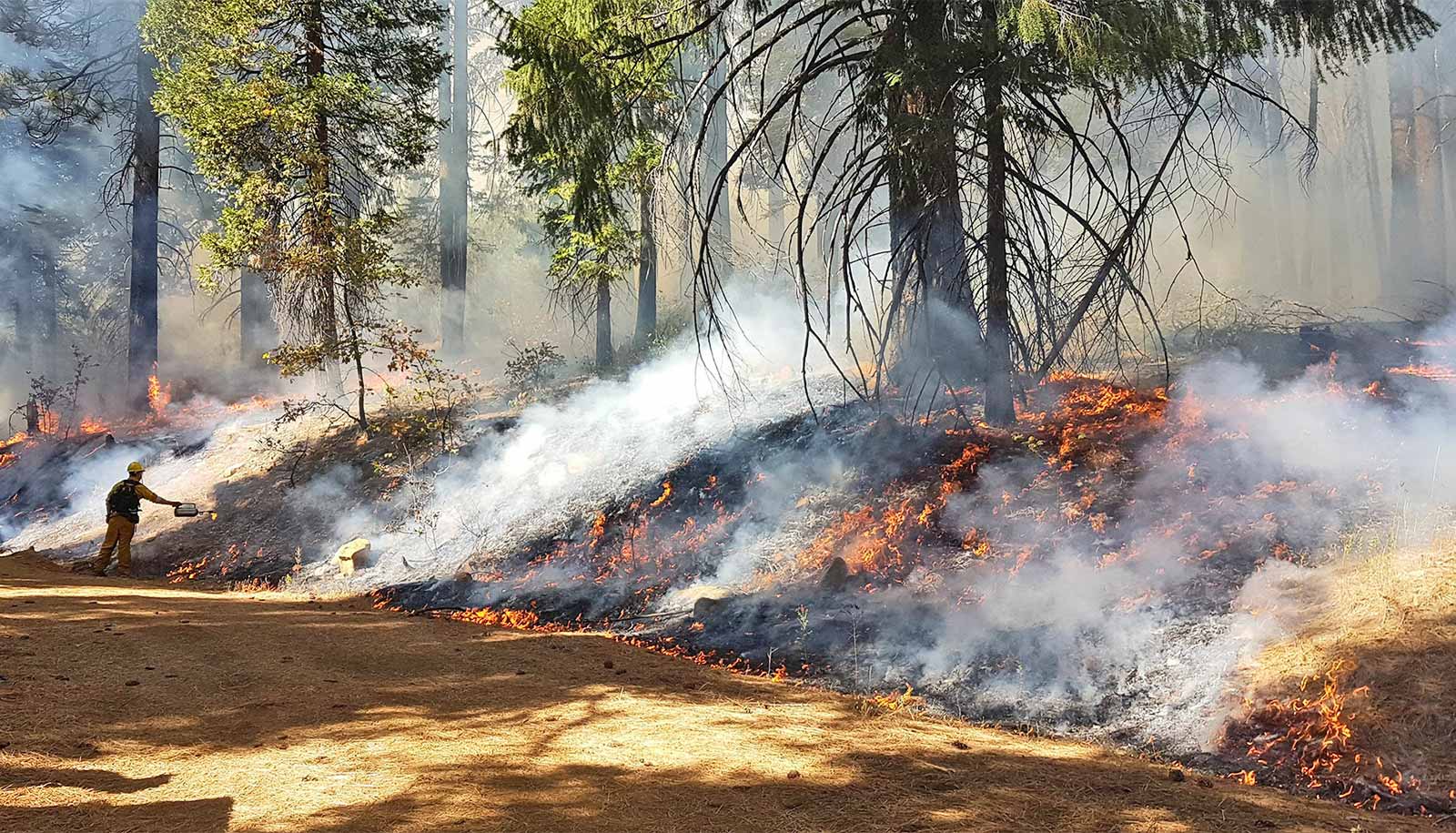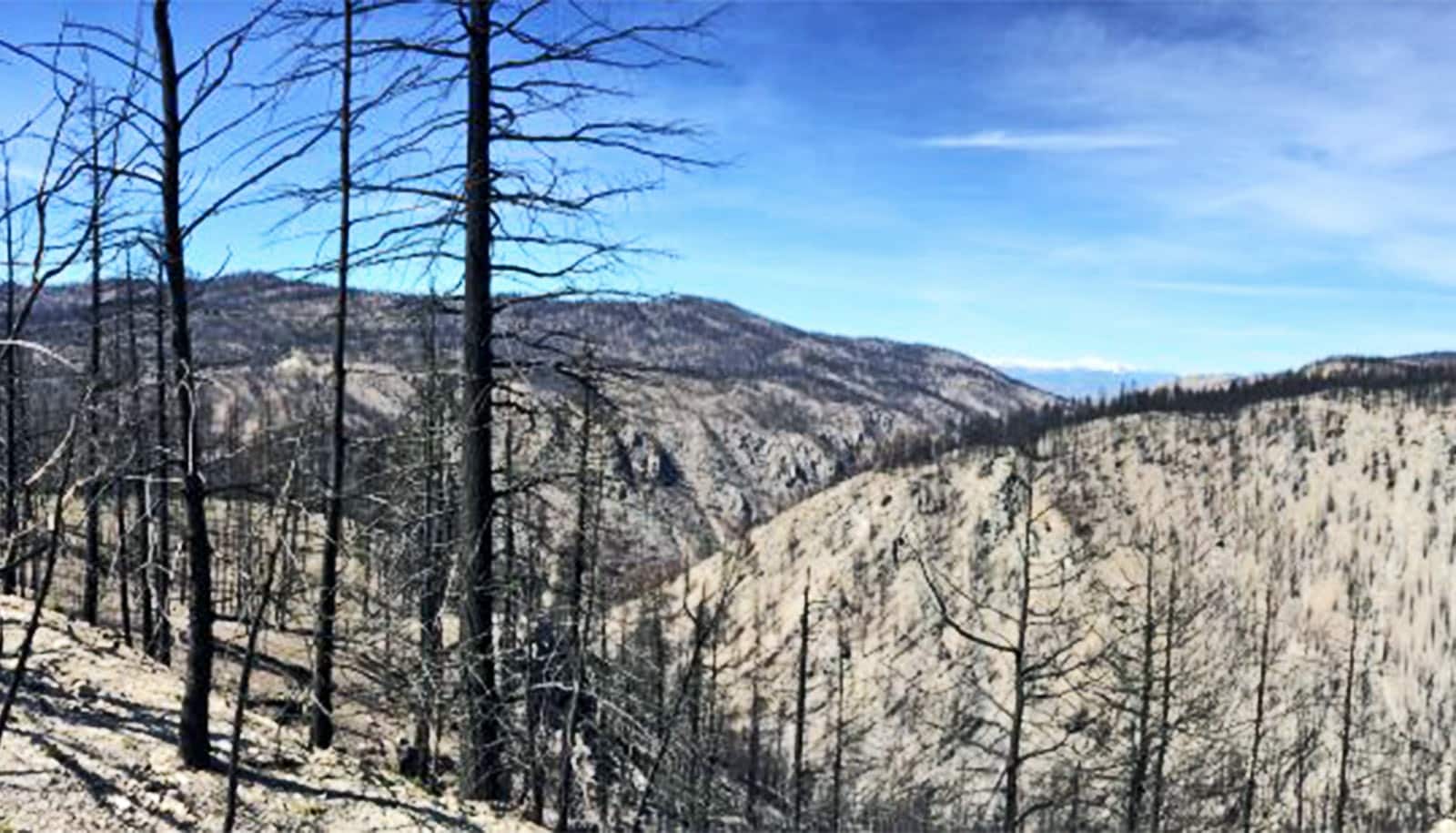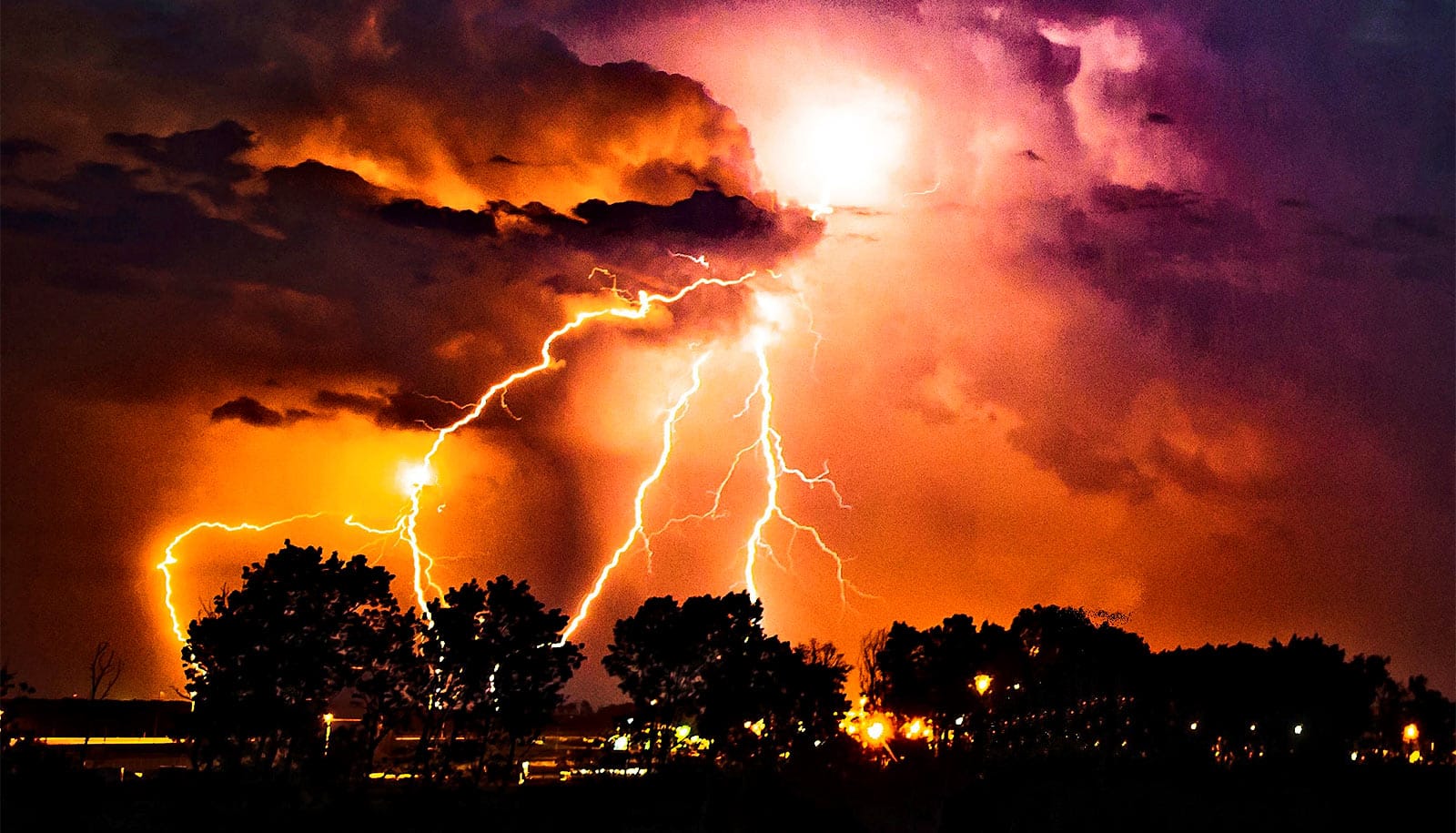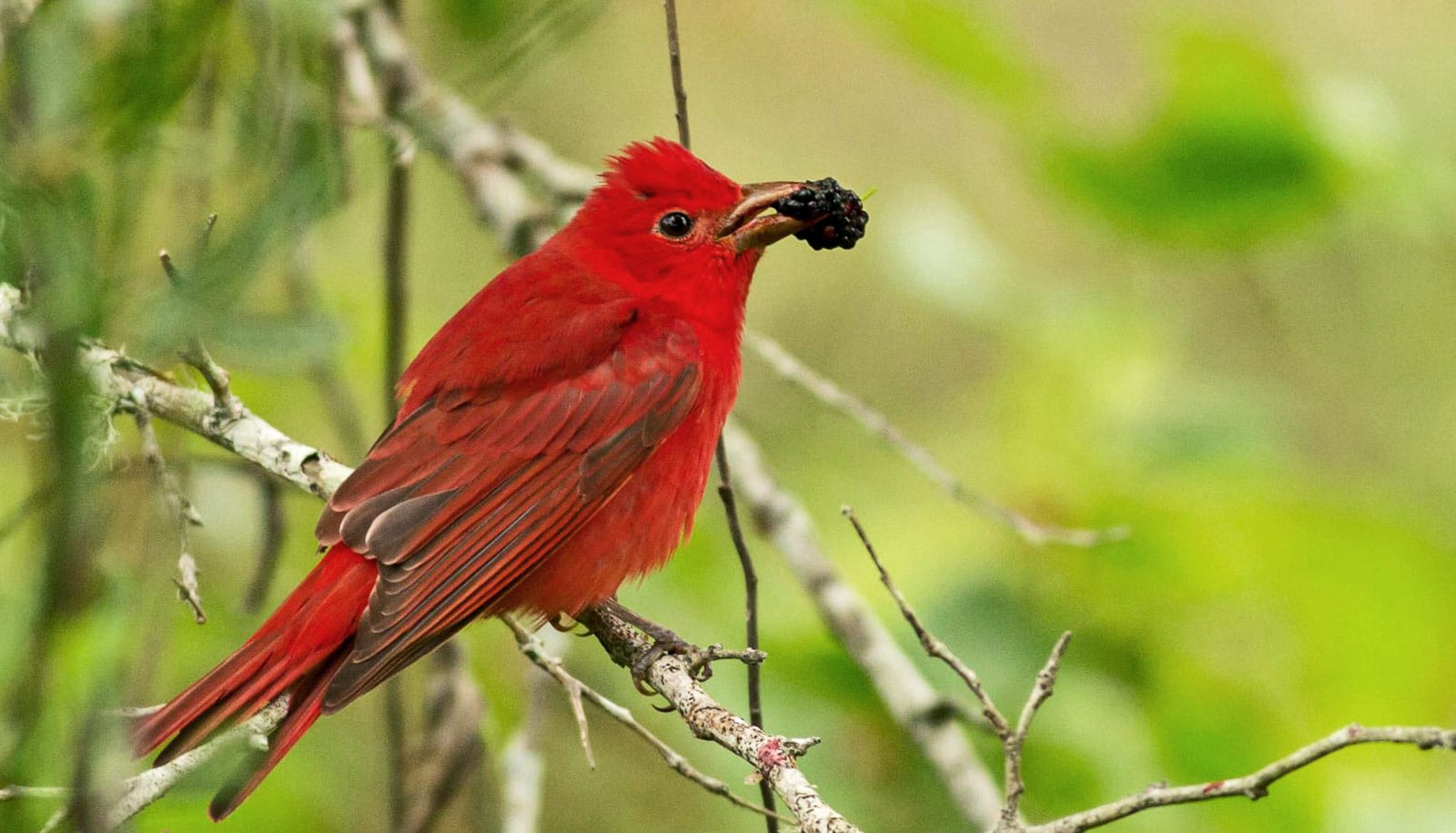Prescribed burning, restoration thinning, or a combination of both are effective at reducing the risk of catastrophic wildfire in California, according to a 20-year experiment in the Sierra Nevada.
These treatments also improve forest health, making trees more resilient to stressors like drought and bark beetles, and they don’t negatively affect plant or wildlife biodiversity within individual tree stands, the research, published online in the journal Ecological Applications, shows.
“The research is pretty darn clear that these treatments are effective—very effective,” says lead author Scott Stephens, a professor of fire science at the University of California, Berkeley. “I hope this lets people know that there is great hope in doing these treatments at scale, without any negative consequences.”
Last year, California announced a strategic plan for expanding the use of prescribed fire to 400,000 acres annually by 2025. However, multiple factors continue to hinder the use of beneficial fire, including the lack of a trained workforce, the need for specific weather conditions for burning, and fears about potential risks.
Solutions to lower wildfire risk
The new study shows that restoration thinning is also a viable option for forest management and can be used in tandem with beneficial fire without harming forest health or biodiversity.
“Our findings show that there’s not just one solution—there are multiple things that you can do to impact the risk of catastrophic fire,” says coauthor Ariel Roughton, research station manager at Berkeley Forests. “Folks can choose from different combinations of treatments that might fit their needs, and we can show them how those treatments might impact things like wildfire behavior, tree growth and carbon holding in their forests.”
Over the past two decades, Stephens and other researchers at Berkeley Forests have used prescribed burning, restoration thinning, or a combination of both to treat plots of land at Blodgett Forest Research Station, a 4,000-acre experimental forest located about 65 miles northeast of Sacramento on the unceded lands of the Nisenan peoples.
The Fire Surrogate Study was one of 13 studies across the US first launched in 1999 with funding from the US Joint Fire Science Program. Its aim was to study whether the two treatments could mimic the beneficial impacts of lightning fires and Indigenous burning practices on California’s forests, which have become dense and overgrown after a century of logging and fire suppression.
“Prescribed fire and restoration thinning are both surrogates for wildfire, a key process that happened frequently in California before European colonization,” Stephens says. “The impetus of this study was: If you’re going to implement these treatments at a large scale, is there anything that’s going to be lost?”
The study created nine experimental plots and three control plots at Blodgett. Three of the experimental plots were managed only using prescribed burns; three burns occurred over the course of 20 years. Three other experimental plots were first thinned and then burned, and the final three were treated only with restoration thinning. The control plots were left to grow without human interference except continued fire suppression.
At the end of the 20-year period, the researchers surveyed the vegetation in each plot and used computational modeling to estimate how many trees were likely to survive wildfire. They found that all three types of experimental plots were significantly more resilient to wildfire than the control plots, showing an 80% likelihood that at least 80% of trees would survive.
They also calculated the “index of competition,” a measure of how strongly trees must compete for resources like sunlight, water and soil nutrients. By removing excess trees and vegetation, thinning and burning both limited the amount of competition between trees, making them less vulnerable to stressors, like drought and bark beetles.
However, the plots treated with a combination of thinning and fire had the best index of competition, suggesting that they would be the most resilient to the impacts of climate change.
“When you combine thinning with fire, you’re able to modify all different levels of the forest structure, and it speeds up the timeline for achieving a more resilient structure,” Roughton says.
Restoration thinning can also provide financial benefits: Often, larger trees can be sold to sawmills, and the proceeds can be used to help offset the cost of forest management. Over the course of 20 years, the treatments at Blodgett were entirely paid for by revenue from timber.
“When I go to Sacramento and talk about [forest management] with legislators, the first question they always ask is about cost,” Stephens says. “People in the state government are telling us that they can’t be the sole source support for this work. That’s why the economics are so important.”
Mosquito Fire: A real-life test
In September 2022, the forests at Blodgett were subjected to a real-life test: On the morning of September 9, 2022, the Mosquito Fire breached the north side of the property, burning approximately 300 acres before it was contained two days later.
One of the study’s control plots was located directly in the path of the blaze, and more than 60% of the trees in this plot were completely scorched. However, neighboring experimental plots that had been treated with prescribed burns served as “fuel breaks,” burning less hot than the control and acting as staging areas for firefighters.
“We think that, overall, our management actions, coupled with the weather, did have a pretty big impact on the behavior of the fire,” Roughton says.
The researchers have received a four-year grant from the Joint Fire Science Program to continue the Fire Surrogate Project. With the help of the grant, they have established a new control plot to replace the one that burned and plan to apply a fourth fire to the experimental burn-only plots.
They are also collaborating with the United Auburn Indian Community to reestablish Indigenous cultural burning at Blodgett.
“We want to be part of the solution, and that’s part of our mission at Blodgett,” Roughton says. “We hope that by doing these studies and bringing folks here to see the effects of the different treatments, they will take that back and apply it to the land that they’re going to be managing.”
Additional coauthors are from UC Berkeley and the Spatial Informatics Group. The US Joint Fire Science Program, the California Fourth Climate Change Assessment, the McIntire-Stennis Program, the California Greenhouse Gas Reduction Fund, and the UC Office of the President’s UC Laboratory Fees Research Program supported the work.
Source: UC Berkeley



